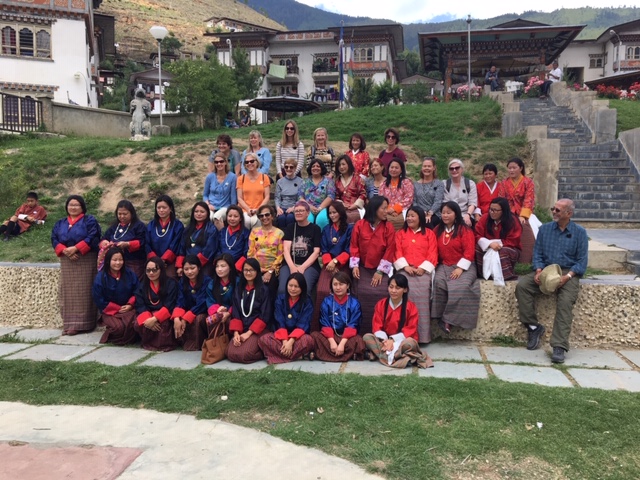
Bhutan: An Experience on top of the world
50 million years ago the Indian plate collided with the Eurasian plate to give rise to the Himalayan mountain range. A mountain range that continues to grow 1 cm a year. What a vision of beauty with high peaks, and breathtaking glaciers and valleys. Nestled in this mountain range is the beautiful landlocked country of Bhutan. Flying into Paro, Bhutan from Kathmandu in Nepal brings this beauty to the fore. Looking out of the plane window, our pilot gently reminds us to look out at Mount Everest, majestically bursting through the clouds at 29,029 feet. As we approach Paro, our plane banks to the left and then to the right between high ridges for a thrilling picture-perfect landing in Paro.
The vistas in Bhutan are breathtaking and pristine with 30 percent of their landmass made up of protected natural forests and reserves connected by eco-corridors. Bhutan’s genuine commitment to sustainability and environmental protection have and not only made them carbon neutral, but carbon negative. All buildings in Bhutan can only be six stories high to protect against earthquake damage, and all architectural designs have to adopt traditional cultural elements by royal decree. However, a traveler bumps into things uniquely Asian everywhere: cows grazing around the hairpin bends at very high elevations and stray dogs at every street corner. Just like strays everywhere, they rule the roads, and bark through the night reminding everybody of their protected status.
Bhutan has a population of 750,000 and a political system best described as a constitutional monarchy and democracy. The groundwork for the democratic principles were laid in the early 1950s and a constitution was enacted in 2008 with democratic elections in both houses of parliament. The present Fourth King, Jigme Singye Wangchuck is the head of state but does not rule with absolute power. The present political and legal reforms were enacted as an inclusive process, but the enactment of restrictive citizenship laws and strong emphasis on cultural assimilation adopted in the late 80’s are not always viewed as benevolent by all. The majority religion is Buddhism followed by Hinduism, and the main languages spoken are Dzongkha and Sharchopka.
The Dining for Women trips to Bhutan visited Paro, Thimphu, Punakha and Haa. One of the highlights of the trips were visits to two READ Bhutan centers in Thimpu and Yangthang. There are nine total READ Bhutan Centers across Bhutan that serve a total of 45,773 members. These centers are built with the support of the villages they are housed in with the locals providing land and labor free of charge. They serve as libraries and community centers providing programs for the communities. DFW funded trainings in financial literacy, livelihood skills, and the establishment of savings cooperatives at all nine centers. We were welcomed at the READ centers in Thimpu and Yangthang with song and dance. The women at the centers showed us the artifacts they had made with felt and recycled plastic, and we tried our hand at felting. Our visit ended with warm butter tea and snacks with the women at READ Bhutan.
Another highlight of our trip was the Women’s Symposium we participated in. Impressive speakers representing the media, the women’s commission, and government agencies shared their knowledge and insights about Bhutan with us. They explained Bhutan’s preference to promote the four pillars of good governance, culture, the environment, and sustainable socio-economic development, all of which when in balance contributes to Gross National Happiness. This entire country exudes sound decision making with investments in health/education and the environment. It speaks so highly of the leadership, the King and the parliament who are working to deliver on this promise. One is reminded of another DFW trip to Rwanda, another country where investments are being made across the board in health, education and the environment. For Dining for Women to invest in worthwhile projects in countries with strong commitments to transform the lives of women and girls is a win-win for all of us.
